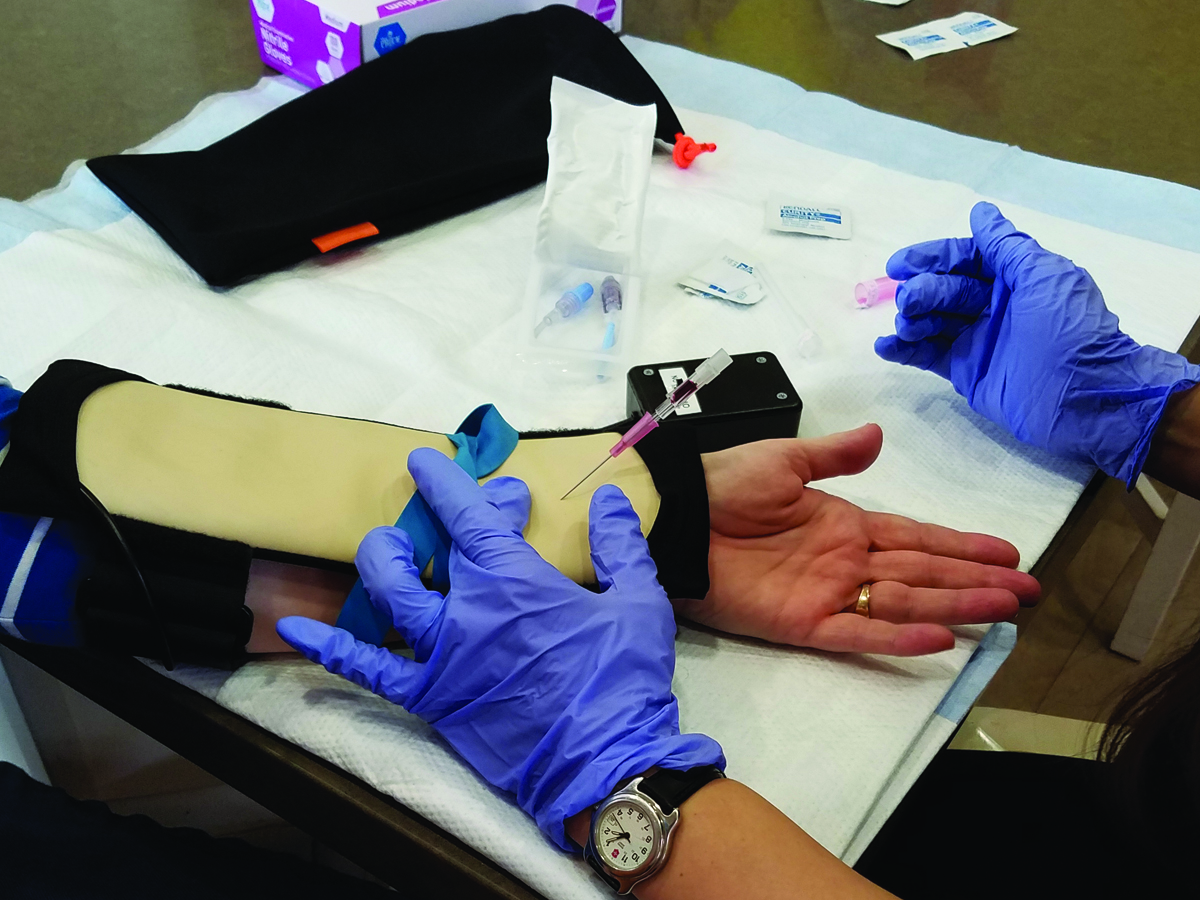
In healthcare simulation education, wearable technology helps students learn certain processes and procedures. Wearable tech can be used with manikins, which can extend their lifetimes by lessening wear and tear, or with standardized participants (SPs). Wearable trainers enhance realism, help develop empathy, and provide visual feedback.
At Pocket Nurse®, we feature a number of different wearable trainers, some of which we manufacture and distribute, and others from outside vendors.
Read our post 3 Reasons to Use Wearable Tech in Simulation.
SimAccessories and SimObesity Suits: A small study of students, instructors, and SPs showed that the use of an obesity simulation suit may reveal anti-obesity bias in teachers or students. (Source) When bias is revealed, it can be addressed, and help students learn empathy. SimLeggings, SimSleeves, and SimObesity suits simulate the unique physical complexities of caring for bariatric patients. With a significant percentage of the U.S. population being obese, and with its impact on health, healthcare providers are going to need to be prepared to provide care for overweight and obese patients. Learn more about obesity nursing care simulations and find a link to the SimObesity suit here.
ReaLifeSim IV Trainer: The motto of B & G Educational Innovations, LLC, creators of ReaLifeSim IV Task Trainers, is “Train the way you treat.” They developed this wearable trainer so students could practice placing an IV in an SP who would react in real time. This realistic trainer is worn by real people during a simulation scenario to add the human factor and encourage provider-patient communication. The trainers can be used on manikins, as well, for enhanced function and extended sustainability.
Inject-Ed Injection Trainer: Due to customer demand, Pocket Nurse collaborated with a manufacturer to develop a latex-free holder to strap the Inject-Ed onto a manikin or SP’s arm or leg. The Inject-Ed Holder includes two elastic fabric fastener straps and a three-inch base. The straps can be threaded through the base, and then the holder is snapped in. Then the holder can be slipped onto an arm or leg and tightened in place. This will give students the opportunity to practice giving injections, communicating with patients, and what to do about patient reaction.
Act+Fast Anti-Choking Trainer: Choking rescue is difficult to practice. Simulating the abdominal thrust needed to expel a foreign object out of a person’s airway is not easy with SPs. This wearable vest trainer makes it easy to demonstrate proper abdominal thrust technique. See our blog post, “The One BLS Skill Hard to Practice.”
When wearable tech is combined with SPs, it makes the simulation very realistic. This sort of immersion reminds students that patients are people, too, and helps students develop good communication skills to use with patients.






